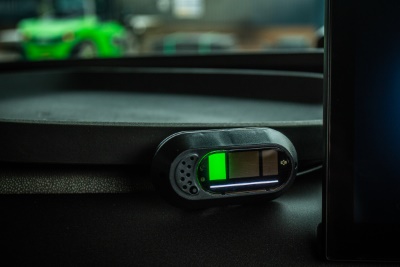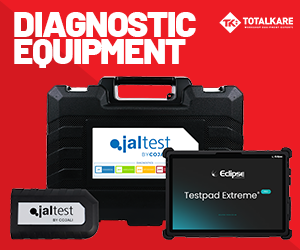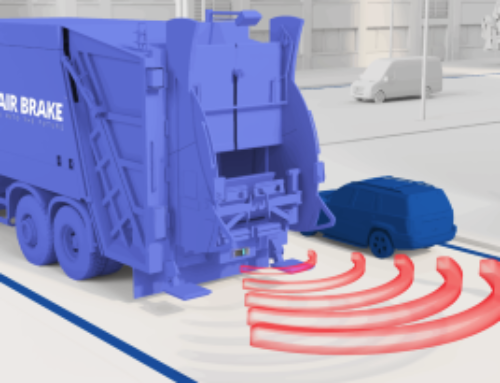Driving up road safety with DVS
 Emily Hardy of Brigade UK explains how the Direct Vision Standard (DVS) and other regulations are transforming CV safety to promote Vision Zero at home and globally
Emily Hardy of Brigade UK explains how the Direct Vision Standard (DVS) and other regulations are transforming CV safety to promote Vision Zero at home and globally
Limited visibility has long been considered a leading cause of vehicle collisions. Blind spots on large vehicles, such as HGVs, buses and construction vehicles, limit the driver’s visibility, meaning vulnerable road users like cyclists and pedestrians are hidden from view with potentially catastrophic consequences.
Changes in vehicle cab design to increase visibility along with advances in vehicle safety devices, including camera monitor systems, have vastly increased indirect vision for drivers. And when paired with active sensor systems, they will alert the driver when a vulnerable road user is in a vehicle’s blind spot.
The road to Vision Zero is firmly under construction globally. Originally introduced in Sweden in the 1990s, Vision Zero’s principles focus on fundamental improvements needed to increase road safety and prevent needless fatalities and injuries caused by road traffic collisions. Since its implementation, Vision Zero has proved successful across Europe and further afield.
 The EU’s General Safety Regulation (GSR) has recognised the importance of increased indirect vision, mandating a list of requirements for new vehicles. These include side and front detection systems to protect vulnerable road users and reduce road fatalities.
The EU’s General Safety Regulation (GSR) has recognised the importance of increased indirect vision, mandating a list of requirements for new vehicles. These include side and front detection systems to protect vulnerable road users and reduce road fatalities.
However, Transport for London’s (TfL) DVS scheme has gone a step further and made it mandatory for all vehicles weighing more than 12 tonnes to either have a cab design with acceptable direct vision (3, 4 or 5-star rated) or for those not reaching the minimum 3-star rating, to fit advanced vehicle safety devices.
For example, according to Direct Vision’s Phase 2 PSS (Progressive Safe System) vehicles fitted with a side detection system must be able to predict the likelihood of a collision and provide an alarm strategy based on probability in order to reduce false alerts and minimise driver overload.
Smarter safety with AI
With such stipulations in force, road safety devices have had to rapidly advance – and Brigade has been at the forefront of researching and developing such technologies, including its award-winning Radar Predict. During its development, Brigade paid close attention to TfL’s specifications for predictive devices and the requirement for minimising false alerts. Utilising AI technology, Brigade was able to create a system that protects cyclists from collisions with HGVs and is fully compliant with the DVS regulations.
AI in Radar Predict’s single dual-radar has been designed to analyse data, such as the speed and direction of a vehicle and cyclist and can differentiate between static and moving objects. It uses an algorithm to alert the driver when an impact with a cyclist is likely and predict collisions based on the trajectories of the vehicle and the vulnerable road user (VRU) to calculate if a collision is imminent.
For example, if a vehicle and a VRU, like a cyclist, are travelling in the same direction on a parallel path side by side, they can continue to do so indefinitely, even when they are in close proximity of each other, with the system issuing no more than a visual warning light so that a driver is simply aware of a VRU’s presence.
However, should the VRU be at risk of colliding with the vehicle, then a more stringent and visual warning alarm will be sounded. This reduces false alerts and drivers being overloaded by continuous warnings.
Radar Predict is ideal for articulated vehicles as it incorporates a trailer discovery mode to eliminate false alerts when the vehicle is turning. This cutting-edge technology aids drivers by presenting visual cues via warning LEDs and audible alerts, guaranteeing prompt intervention and the protection of road users from possible collisions.
Front-facing safety innovation
In addition to this, a Moving Off Information System (MOIS) based on GSR’s Regulation 159 is also required for DVS. Other schemes, such as FORS, CLOCS and DVS phase 1 had previously concentrated on protecting the cyclist during a left turn manoeuvre. However, studies have found that the front blind spot was particularly dangerous for vulnerable road users, especially those aged over 65.
Front Radar is another of Brigade’s devices which is expediting road safety technology. It has been specifically designed to meet DVS requirements and the need for protecting vulnerable road users from front vehicle collisions.
Front Radar’s dual radar collision prediction system provides a 180-degree detection angle to the front of the vehicle covering 0.5 metres either side of the headlights. If a VRU is detected in close proximity to the vehicle, then the driver is alerted via visual and audible signals. A visual warning is provided as the driver is preparing to move away depending on the probability of a collision using a ‘traffic light’ system.
For example, a green light will be shown if a VRU is between 150cm and 250cm from the front of the vehicle and an amber light will be visible if a VRU is between 70cm and 150cm from the front of a vehicle.
When a VRU is less than 70cm from the front of the vehicle, the system will display a red light. If a VRU is detected in any of the three zones when the vehicle begins to accelerate, the display unit will alert the driver with a flashing light as well as an audible alarm.
 Vehicle safety improvements across the globe
Vehicle safety improvements across the globe
DVS isn’t the only Vision Zero initiative to have made a huge difference to vehicle safety technology. Vision Zero is fast gaining traction across the US and Canada. The global NGO, Together for Safer Roads, created the first North American Direct Vision Star Rating System.
In New York, Executive Order 39 now requires city contractors to prepare fleet safety plans, increase driver training, adopt telematics and fit 360-degree cameras to vehicles. All new trucks procured by the City of New York for use by City employees are also required to have 360-degree cameras or highly visible designs.
Brigade’s most popular camera system, the Backeye360, has received an upgrade. The intelligent 360-degree high-definition four-camera system has been enhanced with state-of-the-art AI technology to identify humans and effectively eliminate vehicle blind spots.
Providing a comprehensive view of the surrounding area in a single image, Backeye360’s artificial intelligence will audibly and visually alert the driver when a person is detected. This makes it ideal for vehicles with multiple blind spots, including offside and rear side, or in areas where there are higher volumes of vulnerable road users, such as cities.
Telematics solutions, such as Brigade Telematics, can support schemes like Executive Order 39 in New York by providing real-time vehicle tracking, reporting, and comprehensive data analytics to enhance fleet management and safety. Brigade also offers integration of its telematics system via Webfleet – Bridgestone’s globally trusted fleet management solution – to streamline user experience.
Vision Zero is growing rapidly in Europe too. In Italy, the city of Milan has introduced the Blind Spot Resolution 971/2023, which requires vehicles travelling between 7.30am and 7.30pm in the city to be fitted with systems that detect vulnerable road users close to the front or the side of the vehicle.
 Meanwhile, in Germany the Agricultural Society, along with the support of the Federal Ministry of Transport, has stipulated that agriculture vehicles, such as tractors, must be fitted with camera systems to reduce cross traffic collisions.
Meanwhile, in Germany the Agricultural Society, along with the support of the Federal Ministry of Transport, has stipulated that agriculture vehicles, such as tractors, must be fitted with camera systems to reduce cross traffic collisions.
In Asia, Japan has also adopted the UN Regulation No 151 for blind spot information systems for detecting cyclists and made it mandatory for all new trucks nationwide.
Next steps in safety
As more countries adopt and implement regulations and standards for road users, road safety technology will need to continue to adapt and develop at a rapid pace to keep up with the growing demand for compliance while meeting the needs of operators. Ultimately, regardless of the regulation or standard, the transport industry should consider prioritising nearside and front blind spots as key risk areas and mitigate for these in their future plans as the journey to Vision Zero accelerates.













